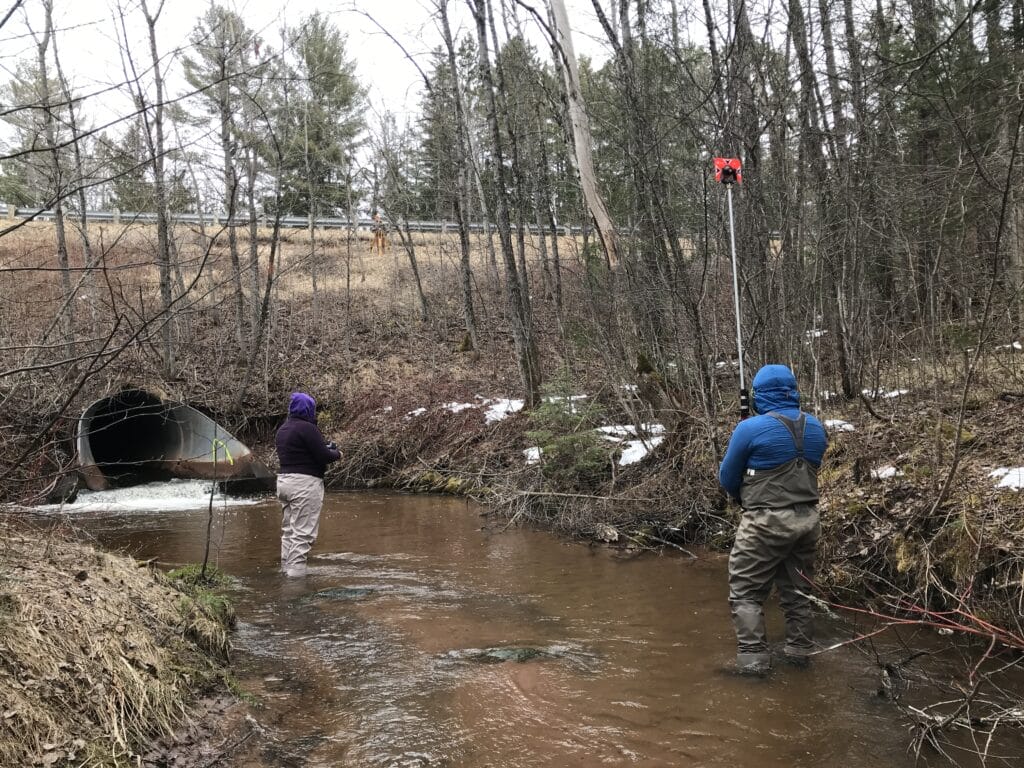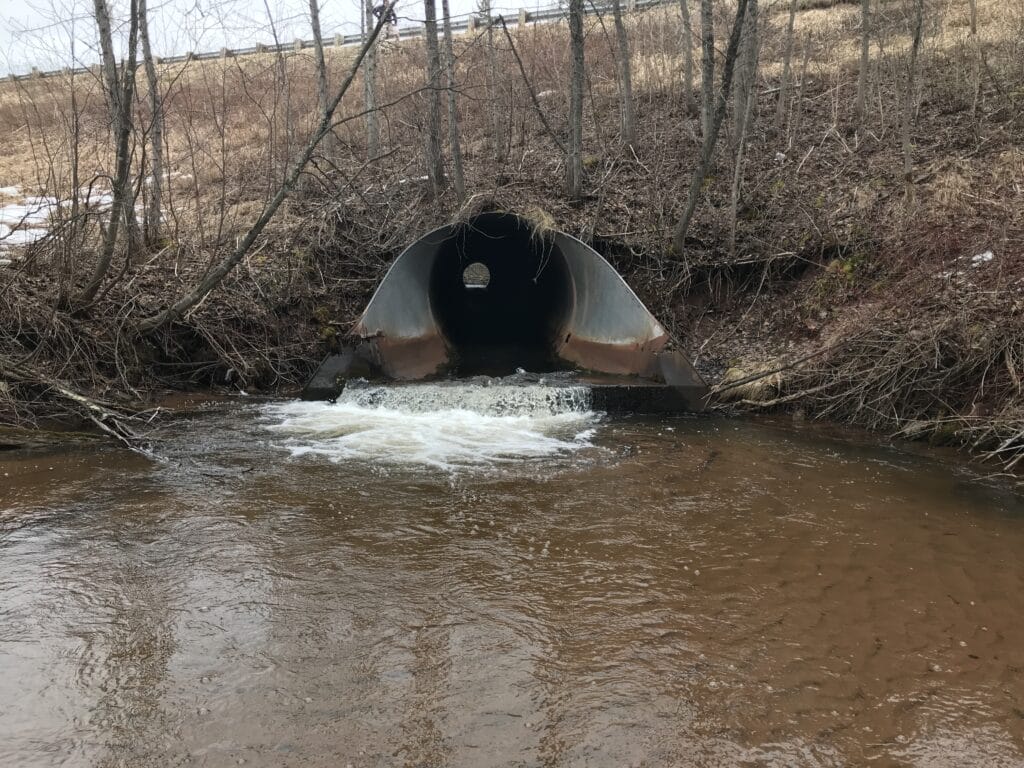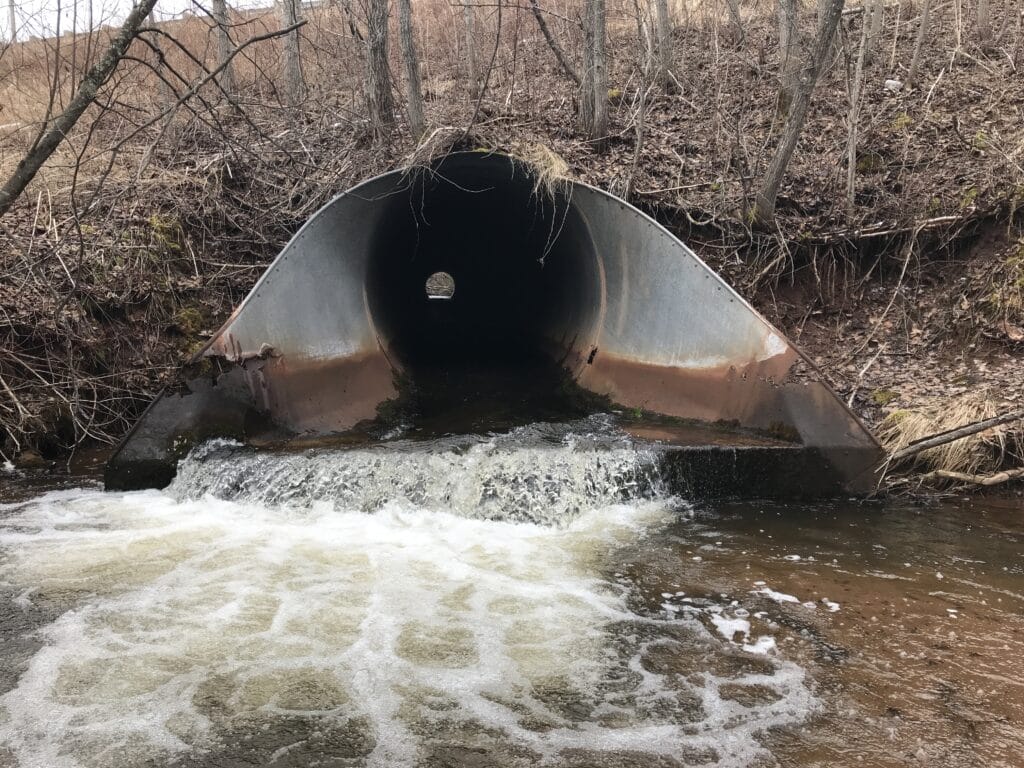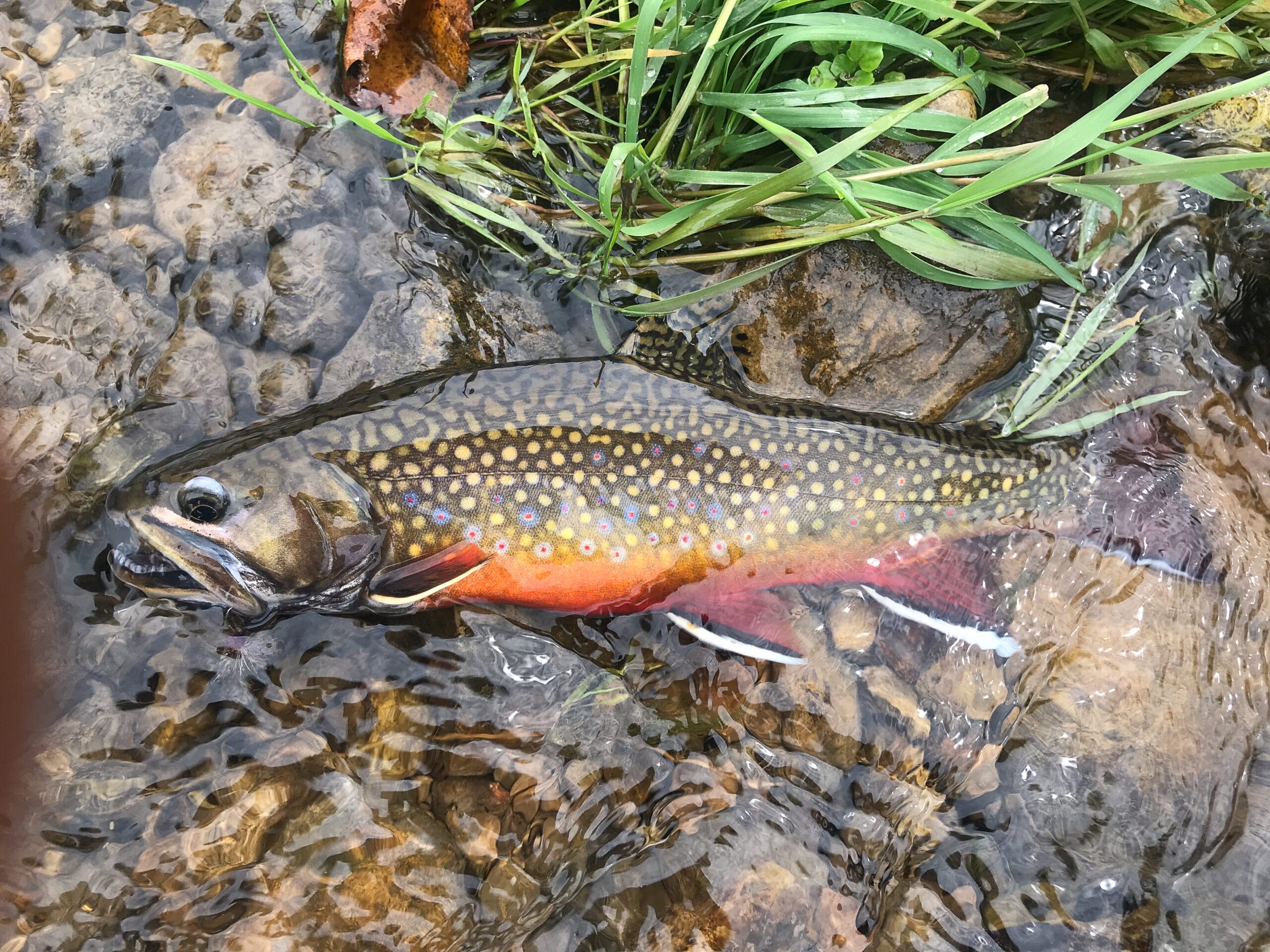The Bois Brule River is among the best-known of Wisconsin’s trout streams. While the big river teems with big rainbow and brown trout, its tributaries are good trout waters in their own right.
One of those will soon be even better after completion of a road-stream crossing structure.
Sandy Run Creek is a Class 1 trout stream in Douglas County, flowing into the Bois Brule. A culvert passes the stream under Wisconsin Highway 27 near the town of Brule. Unfortunately, the lower end of the culvert is perched, meaning aquatic stream residents can’t make it upstream past the barrier.

TU, with support from many partners, will replace the culvert with a fish-friendly design that will reconnect the upper and lower stream reaches.
“The State Highway 27 crossing is the only known barrier in Sandy Run Creek and limited movement upstream from the Bois Brule and Little Bois Brule Rivers,” said TU’s Chris Collier, Great Lakes stream restoration manager in Wisconsin. “This will not only benefit stream resident fish but also has the potential to benefit species that move from Lake Superior into its tributaries for spawning.”
TU’s collaborators in the project include the US Fish and Wildlife Service, the National Oceanic and Atmospheric Administration, the Wisconsin Department of Natural Resources, Douglas County and the Town of Brule.
The crossing is a state highway road owned and operated by the Wisconsin Department of Transportation.

“As the project developed, TU reached out to the DOT to get their support for our team’s effort,” Collier said. “Not only was the DOT supportive but they offered to take the lead on project design and implementation, which was a huge benefit to the project since the crossing is quite large, and any replacement will take significant road and structural engineering experience. Partnering with an agency that does that kind of work regularly is a huge help to our team.”
Beyond that technical expertise, the Wisconsin DOT is also bringing federal highways funding from the PROTECT — (Promoiting Resilient Operations for Transformative, Efficicent and Cost-Saving Transportation) program, which is made possible by the historic Bipartisan Infrastructure Law.
“This financial support was possible because of the exceptional need for the project and the value it brings to the community,” Collier said. “The need is not only for the fisheries component but also infrastructure safety.”

Collier noted that the current crossing structure is aging and that installing a new, fish-friendly structure will not only reconnect habitat but also result in a more stable and resilient structure.
“That is due to the increased structure size, which will allow fish passage and also result in a crossing that will allow natural stream flows and mitigate the risk of flood damage,” Collier said.
The project is being designed by the Wisconsin DOT with the Wisconsin DNR and TU providing design review. Designs are expected to be completed in 2025 with construction occurring in summer 2026.
The project will complement another crossing replacement project TU is leading immediately downstream in the Little Bois Brule River to allow stream resident trout and lake run trout to access Sandy Run Creek directly from the Bois Brule River.



